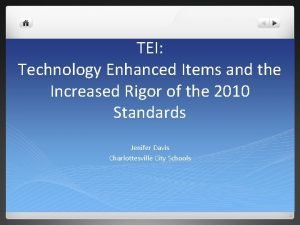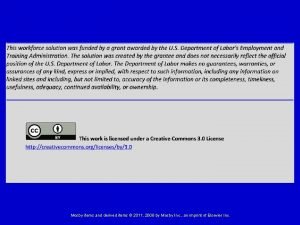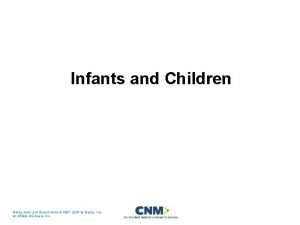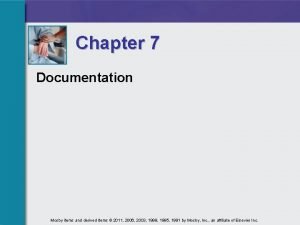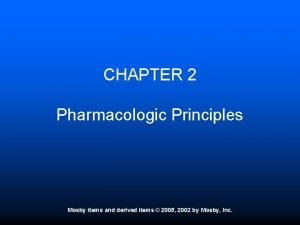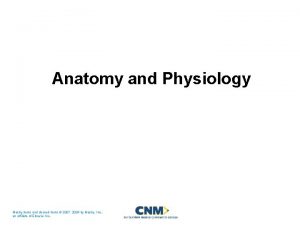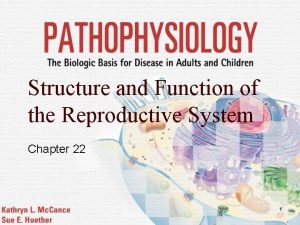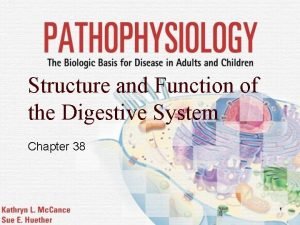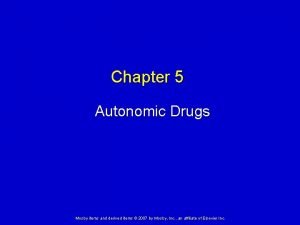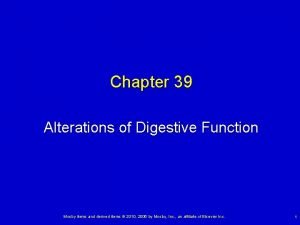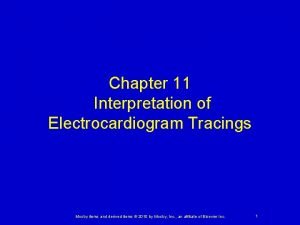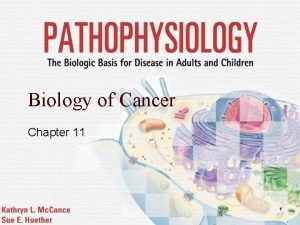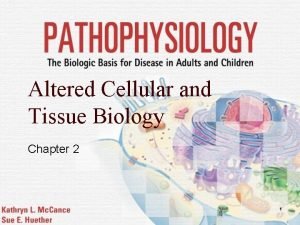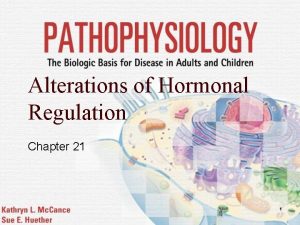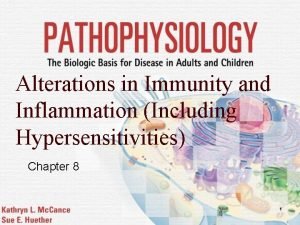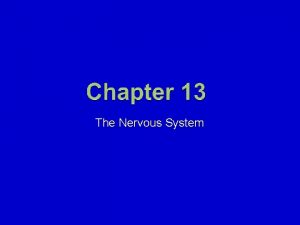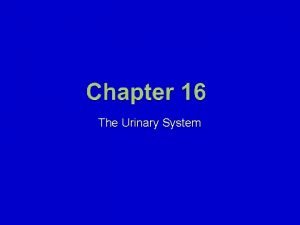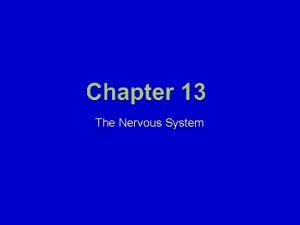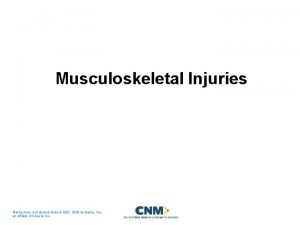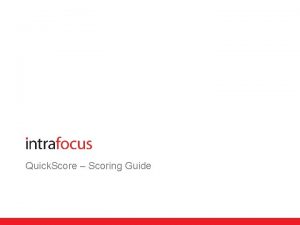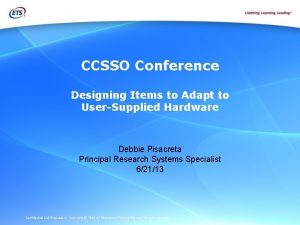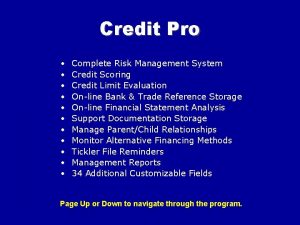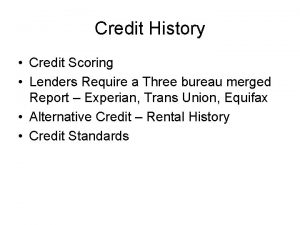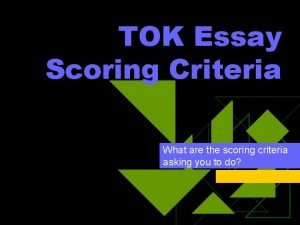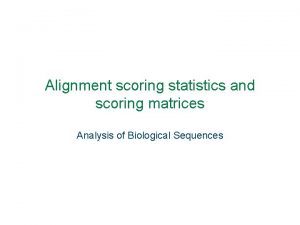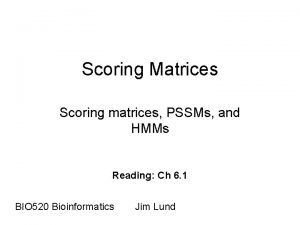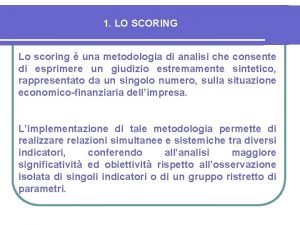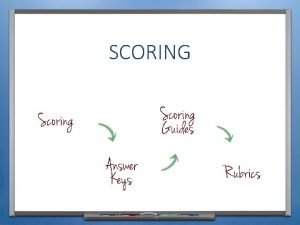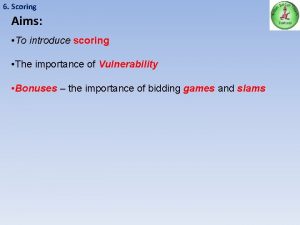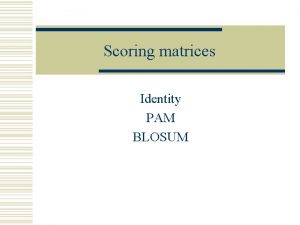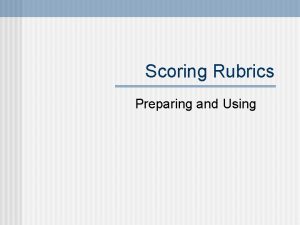Partial Credit Scoring for Technology Enhanced Items CCSSO






















- Slides: 22

Partial Credit Scoring for Technology Enhanced Items CCSSO National Conference on Student Assessment 22 June 2016 1

Overview § Possible scoring rules for technology enhanced items (TEIs) § Dichotomous § Partial credit scoring (polytomous) § Evaluating whether partial credit scoring is “working” § Study methods & results § Additional considerations § Do TEIs with more correct answers take longer to answer? § Are TEIs with more correct answers more difficult? § Do TEIs take more time to answer compared to multiple-choice items? § Should TEIs be worth more points than multiple-choice items? § How might partial credit scoring impact student subgroups? 2

Possible Scoring Rules for TEIs 1. Dichotomous ‒ Currently used in Virginia ‒ Students must select all correct answers to receive 1 point; all other responses receive 0 points 2. Polytomous ‒ Virginia is looking to implement partial credit scoring in the future for TEIs ‒ Students get “full credit” if they select all correct answers ‒ Different methods allow for different ways to determine how partial credit versus no credit is determined ‒ This research looked at three possible methods: § “N Method” § “N-1 Method” § “N/2 Method” 3

Partial Credit Scoring: N Method § N = the total number of correct answers for a particular TEI § Each correct response receives partial credit § For example, if there are 5 correct answers, each correct answer could be worth 1 point for a total of 5 possible points § Items with different numbers of correct answers will have different numbers of score points § Could scale each item to have the same score range (e. g. , 01), but there will be N+1 score categories (e. g. , 0, 1/5, 2/5, 3/5, 4/5, and 1) 4

Partial Credit Scoring: N Method § Benefits: ü perceived face validity ü might be similar to how credit would be awarded in the classroom for multi-part items § Limitations: × each score point may not really be discriminating between distinct levels of content knowledge × may be difficult to obtain sufficient numbers of students within all score categories × having items with different score ranges may make meeting a test blueprint more challenging 5

Partial Credit Scoring: N-1 Method § N = the total number of correct answers for a particular TEI § “N-1 Method” – Students get partial credit if they select all but one correct answer; if they select two or more incorrect answers, they receive no credit § N-1 Method will have 3 score categories for all items (e. g. , 0, 1, 2) § Example: If an item has 5 correct answers and the student selects all 5 correct, they receive full credit. If the student selects 4 of the 5 correct answers, they receive partial credit, and if they get 0 -3 correct answers, they receive no credit. 6

Partial Credit Scoring: N-1 Method § Benefits: ü all items, regardless of the number of correct answers, have three possible score categories ü having the same score range for all TEIs will make meeting a test blueprint more straight-forward ü with only three score categories, sparse data is less likely to be a problem, which will make parameter estimation more stable § Limitations: × one-size-fits-all scoring approach may not work well for very different TEI types × tends to be a very conservative partial credit scoring approach such that very few students may obtain partial credit (dichotomous outcome) 7

Partial Credit Scoring: N/2 Method § N = the total number of correct answers for a particular TEI § “N/2 Method” – Students get partial credit if they select at least half of the correct answers; if they select less than half of the correct answers, they receive no credit § N/2 Method will have 3 score categories for all items (e. g. , 0, 1, 2) § N/2 Method and N Method are identical for items with 2 correct answers § Example: If an item has 5 correct answers and the student selects all 5 correct, they receive full credit. If the student selects 3 or 4 of the 5 correct answers, they receive partial credit, and if they get 0 -2 correct answers, they receive no credit. 8

Partial Credit Scoring: N/2 Method § Benefits: ü all items, regardless of the number of correct answers, have three possible score categories ü having the same score range for all TEIs will make meeting a test blueprint more straight-forward ü with only three score categories, sparse data is less likely to be a problem, which will make parameter estimation more stable § Limitations: × one-size-fits-all scoring approach may not work well for very different TEI types 9

Is PCS “Working”? Evaluation Criteria 1. Number of Students in Each Score Category ‒ Do we have enough data to estimate differences in difficulty from one category to the next? ‒ Are we making a meaningful differentiation between groups of students? 2. As item scores increase, is the total test score increasing? 3. Are item-total correlations increasing? ‒ Are we improving measurement precision, or just adding “noise” into student scores? 10

Methods § Focused on newly field-tested TEIs in one grade of science and one grade of mathematics § Analysis focused on Hot Spot and Drag and Drop TEIs that required two or more correct answers for full credit. Note: This study used items that were not specifically developed with partial credit scoring in mind. Virginia intends to begin development of TEIs that are created with partial credit scoring considered from the outset moving forward. 11

Results Item Type Hot Spot Drag-and-Drop Number of Students 5, 231 3, 938 3, 904 3, 939 3, 955 5, 089 Scoring Approach Dichotomous N/2 0 1 31. 27 39. 07 26. 91 34. 00 26. 42 35. 99 23. 68 26. 64 32. 51 35. 61 21. 83 32. 62 29. 34 35. 38 21. 13 29. 53 30. 62 37. 59 30. 22 31. 08 25. 43 35. 72 17. 62 26. 77 0 24. 50 23. 68 13. 00 – 31. 26 17. 50 1 27. 40 26. 64 – 25. 25 23. 11 17. 71 Scoring Approach N 2 3 4 34. 00 39. 07 35. 99 22. 64 27. 76 33. 00 17. 00 29. 53 – 30. 71 31. 54 37. 59 26. 42 27. 25 35. 72 2 39. 07 35. 99 35. 61 35. 38 37. 59 35. 72 5 35. 61 35. 38 12

Results Item Type Hot Spot Drag-and-Drop Scoring Approach Dichotomous N/2 0. 42 0. 51 0. 35 0. 17 0. 20 0. 39 0. 38 0. 34 0. 35 N 0. 51 0. 35 0. 19 0. 20 0. 35 13

Results 1. N Method ‒ Many score categories with very few students, especially for TEIs with a larger numbers of correct answers ‒ Many cases where the total score did not increase as the item score increased 2. N-1 Method ‒ Very few students would receive partial credit using this method 3. N/2 Method ‒ Most consistent with how content experts assigned partial credit scoring to TEIs ‒ Appears to work well with Virginia items in terms of having sufficient numbers of students within each of the three score categories ‒ Did not appear to result in huge improvements in measurement properties (item total correlations), but also did not systematically decrease technical quality of scores 14

Do TEIs with More Correct Answers Take Longer to Answer? 250 Seconds 200 150 100 50 0 0 1 2 3 4 Number of Responses 5 6 15

Are TEIs with More Correct Answers More Difficult? 1 0, 9 0, 8 P-Values 0, 7 0, 6 0, 5 0, 4 0, 3 0, 2 0, 1 0 0 1 2 3 4 Number of Responses 5 6 16

Do TEIs take More Time than MC Items to Answer? Subject TEI MC Min Max Average Science 28. 32 214. 73 81. 45 58. 50 Math 76. 49 466. 98 185. 55 132. 29 17

Should TEIs be Worth More Points than MC Items? Yes? § On average TEIs take more time to answer § TEIs often require more than one student interaction, while MC items require students to select only one answer § TEIs often used to try to measure higher level skills § TEIs look similar to items that might receive more than a 0/1 score in the classroom 18

Should TEIs be Worth More Points than MC Items? No? § Number of interactions not correlated with the amount of time students spend on an item § TEIs not necessarily more difficult than MC items when scored dichotomously § Often each interaction is not measuring a distinct skill, but is just more thoroughly evaluating a single skill 19

How Might Partial Credit Scoring Impact Student Subgroups? § § TEIs make up 15 -20% of the items on Virginia assessments Partial credit scoring essentially splits the category of students who received 0 points under dichotomous scoring into 2 or more score categories—no credit and various degrees of partial credit This may help lower performing students show some content mastery However, each type and subtype of TEI often requires understanding of a different mechanism for responding (e. g. , various forms of clicking and/or dragging) § § This may result in an additional obstacle for English Language Learners and Poor Readers who may struggle to understand item-specific response directions The Virginia Department of Education provides practice items and released items to give students and schools an opportunity to become familiar with different types of TEIs 20

Take-Aways 1) Not all technology enhanced items support partial credit scoring (e. g. , one blank FIB items) 2) For items that do support partial credit scoring, determining which responses merit partial credit is not always straight-forward 3) There are many methods for applying partial credit, some which may work better than others for a given context 4) Partial credit scoring may not result in vast improvements in measurement precision but may still enhance face validity and public perception 21

 Technology enhanced items
Technology enhanced items Mosby items and derived items
Mosby items and derived items Mosby items and derived items
Mosby items and derived items Acuity charting forms
Acuity charting forms Lliver
Lliver Caudal region of the body
Caudal region of the body Mosby items and derived items
Mosby items and derived items Mosby items and derived items
Mosby items and derived items Mosby items and derived items
Mosby items and derived items Autonomic drugs
Autonomic drugs Mosby items and derived items
Mosby items and derived items Absorptive atelectasis
Absorptive atelectasis Mosby items and derived items
Mosby items and derived items Mosby items and derived items
Mosby items and derived items Mosby items and derived items
Mosby items and derived items Altered cellular and tissue biology
Altered cellular and tissue biology Mosby items and derived items
Mosby items and derived items Mosby items and derived items
Mosby items and derived items Mosby items and derived items
Mosby items and derived items Mosby items and derived items
Mosby items and derived items Mosby items and derived items
Mosby items and derived items Mosby items and derived items
Mosby items and derived items Mosby items and derived items
Mosby items and derived items
